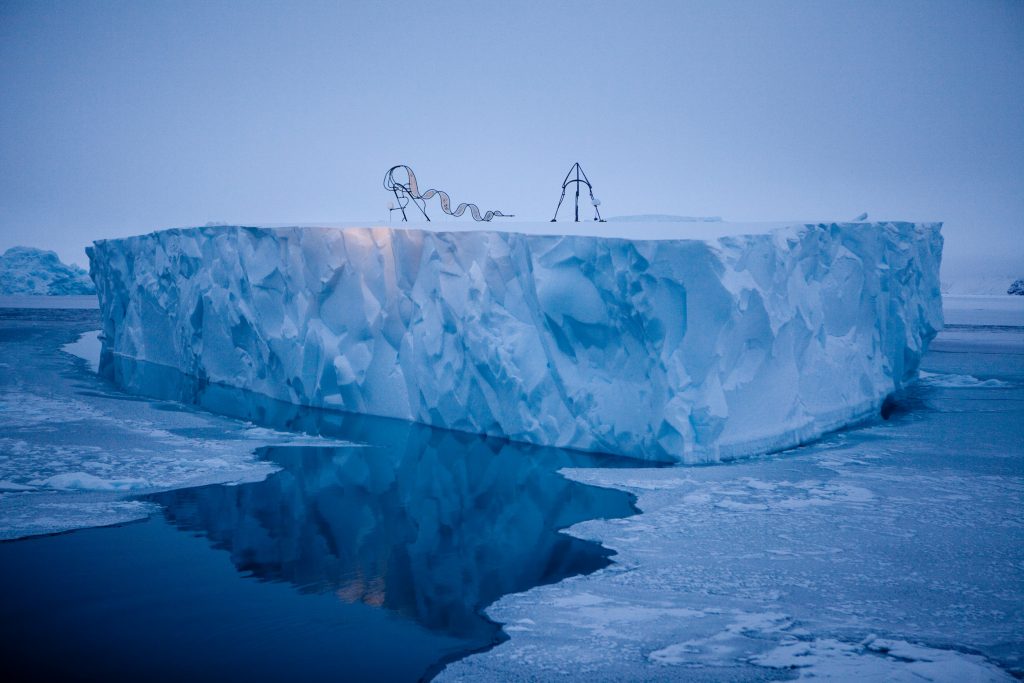Artist Ap Verheggen speaks with a hoarse but energetic voice. His vocal cords froze while he was filming a documentary on the North Pole. Between 1999 and 2010 he travelled to the most northern part of Canada and the west of Greenland to film the Inuit, who – in two decades time – had to completely reset their culture that went back thousands of years. As the sea ice they traditionally hunted on, had virtually disappeared. They had no other choice.
In 2009 Ap placed two sculptures with GPS-trackers on an ice berg in western Greenland to show the public how fast the climate up there was changing. ‘Until that moment the communication about climate change had been almost purely scientific. I wanted to raise awareness among the general public.’ One day in May 2009 Ap saw on his computer that the two trackers were drifting in different directions. His local aids reported the ice berg had completely disintegrated. That month it had been 20 degrees Celsius, instead of the usual minus 20.
